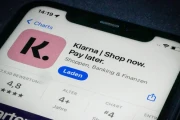Beyond the Hype: Why Klarna's IPO Signals the Dawn of a New Financial Reali...
2025-10-04 20 klarna
Klarna, the Swedish fintech firm that built its empire on the simple premise of "buy now, pay later," has made a significant strategic pivot. The company recently unveiled a global, two-tiered membership program, "Premium" and "Max," designed to offer a suite of perks traditionally associated with high-annual-fee credit cards. They’re selling subscriptions, travel insurance, and metal cards—all without, they claim, the burden of "expensive credit."
On the surface, the announcement (Klarna Launches Memberships: Premium Perks Without Expensive Credit) reads like a straightforward evolution. But a closer examination of the numbers reveals a far more ambitious, and frankly, more audacious, play. Klarna isn't just adding features; it's attempting to fundamentally alter its relationship with its 111 million users. The core question isn't just "what is Klarna offering?" but rather, "what is the real price of admission into their walled garden?"
Let’s look at the raw data. Klarna is offering two tiers. The "Premium" plan costs €17.99 per month, while the "Max" tier comes in at a steep €44.99 per month (or about $52, for the US market). For that price, users get a bundle of benefits: cashback on their `Klarna card` balance, subscriptions to publications like The New York Times and Vogue, ClassPass memberships, and, for Max users, unlimited airport lounge access.
Klarna’s Chief Marketing Officer, David Sandström, frames this as a democratization of luxury. "For decades," he states, "exclusive perks...were only available to elite credit card holders. Klarna is changing that." This is a compelling narrative, but it sidesteps the underlying financial calculus. Premium credit cards justify their fees by tying rewards to spending, often on credit. Klarna’s model is a fixed, recurring subscription fee drawn from a user’s balance.
This is less a revolution and more of a repackaging. Klarna is essentially acting as a bulk reseller of subscription services, bundling them into a single, high-margin product. The company claims the Max tier delivers more than €5,000 in annual value. I've analyzed countless loyalty programs, and the framing of "value" here is particularly aggressive. This figure almost certainly assumes a user maximizes every single available perk, every single month—an outcome with a statistical probability approaching zero. It’s the gym membership model applied to finance: the business relies on the breakage, the gap between the perceived value and the customer’s actual, lower utilization.

This is the financial equivalent of a cable bundle. You pay a high monthly fee for 500 channels, but you only ever watch about ten—or to be more exact, 12 on a good week. Is unlimited lounge access valuable to someone who flies twice a year? Is a subscription to GQ a perk for someone who doesn't read it? The model's success hinges on consumers overvaluing the potential benefits and underestimating the fixed, recurring cost.
The real objective here has little to do with selling magazine subscriptions. This is a deliberate, calculated strategy to transition the `Klarna account` from a transactional tool into a primary financial hub, much like Venmo or even `PayPal`. As analyst Ben Danner noted, the goal is to get customers to "store and draw from" a balance within the Klarna app. The membership fee is the price of admission; the real prize is the user’s cash balance.
By incentivizing users to load their `Klarna account` to earn cashback (a paltry 1% even on the highest tier), Klarna increases the stickiness of its platform. It moves from being a checkout button—competing with `Afterpay`, `Affirm`, and `Sezzle`—to becoming the place where a user’s financial life begins. The heavy, metal `Klarna card` (available in silver, black, or rose gold) isn’t just a payment tool; it’s a physical token of belonging to this new ecosystem. It’s a psychological anchor.
This is a direct response to the crowded BNPL market and a necessary step following the company's IPO (which priced at $40 per share for a $15.1 billion valuation). Investors demand a path to deeper monetization, and transactional fees alone are a tough business. Subscription revenue provides a predictable, recurring income stream. But more importantly, holding user balances opens up future avenues for banking products, investments, and other financial services.
But what does this mean for the consumer? Klarna’s marketing is built on an anti-credit premise, yet it’s introducing a product with a recurring monthly cost of €44.99—that’s €539.88 per year. This fee isn't tied to responsible spending or building a credit history. It's simply a sunk cost. Is a consumer who is wary of a $500-annual-fee credit card really the target demographic for a €540-annual-fee debit card service? There seems to be a fundamental discrepancy in the stated mission versus the financial reality of the product. And who, precisely, is the ideal customer for this?
Ultimately, Klarna's new membership program is a beautifully packaged bet against the consumer's own financial discipline. The company is wagering that the allure of "premium perks" will obscure the simple arithmetic of the monthly fee. For a very small subset of hyper-users who can extract maximum value from every single subscription and travel benefit, the numbers might just work. For everyone else, this is likely to be a net financial loss, a recurring payment for benefits they will largely forget they even have. The real product isn't the lounge access or the digital magazines. The product is the ecosystem itself, and the monthly fee is what Klarna is charging you to live inside it.
Tags: klarna
Related Articles

Beyond the Hype: Why Klarna's IPO Signals the Dawn of a New Financial Reali...
2025-10-04 20 klarna